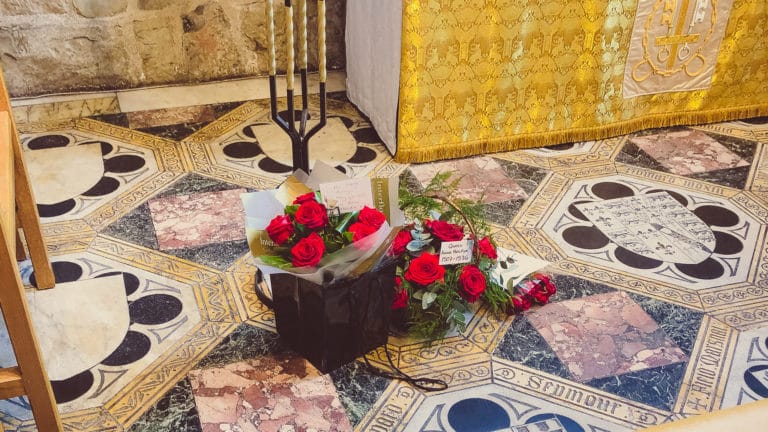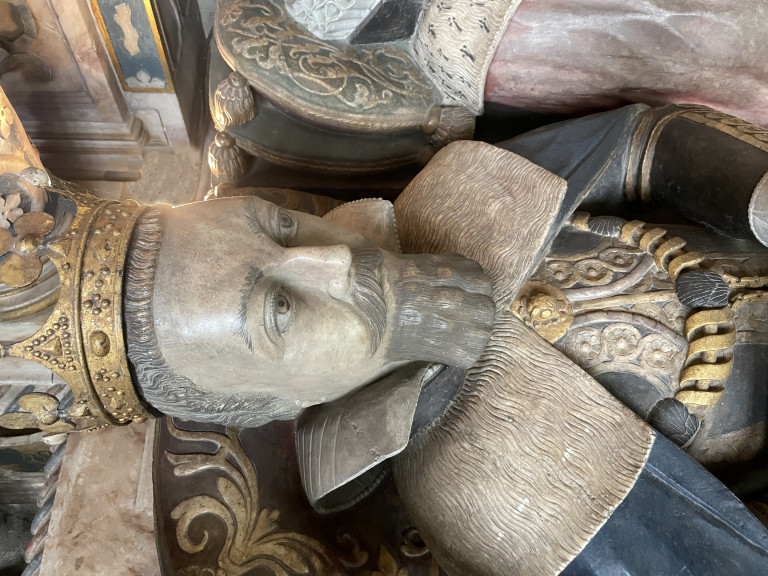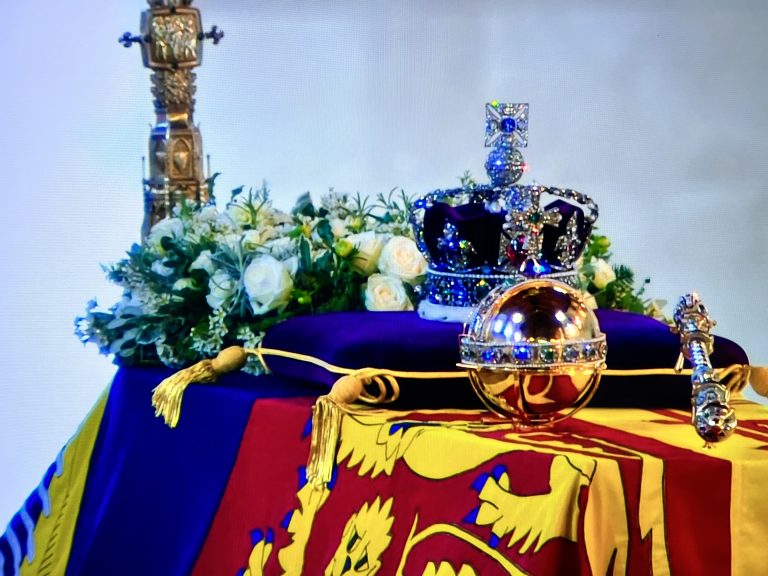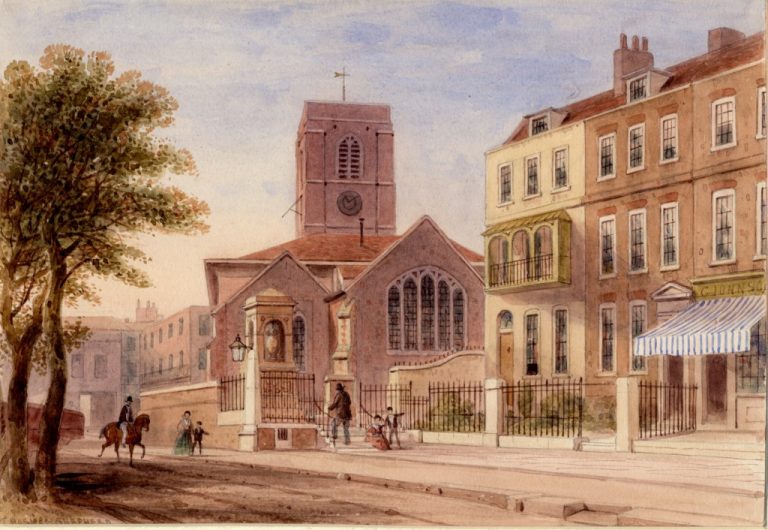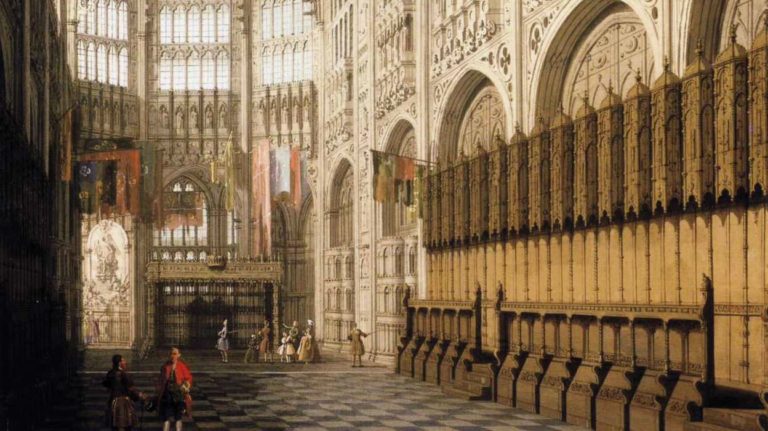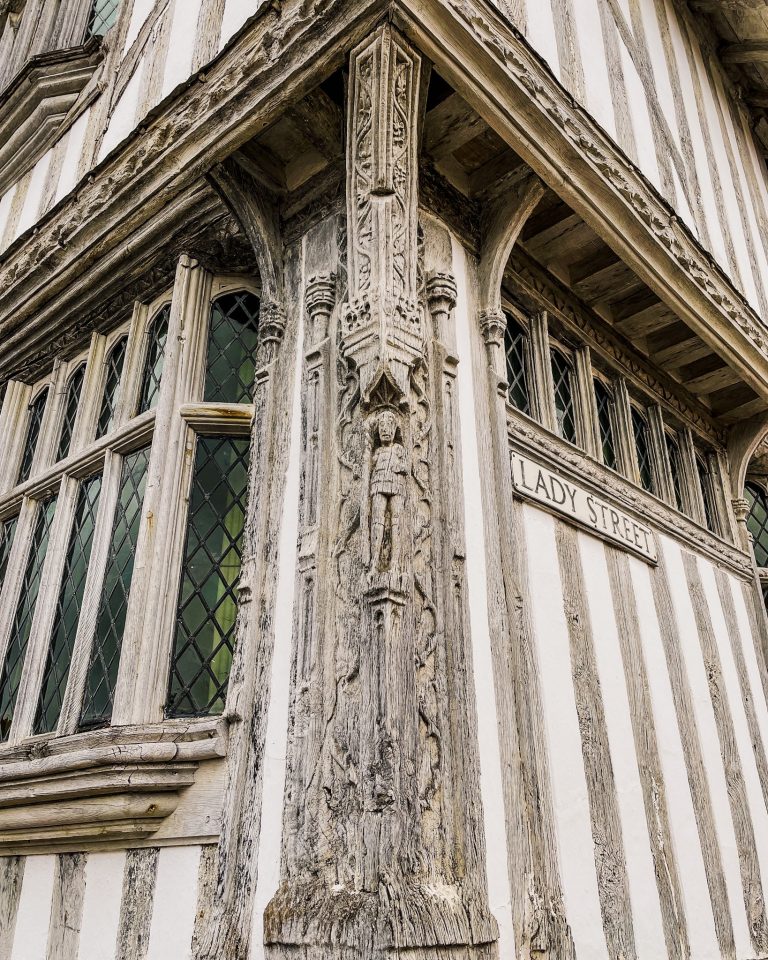Westminster Abbey: A Dazzling Theatre of Coronation
As we prepare for the coronation of King Charles III and Queen Camilla on 6 May, we can be sure that one place will provide the perfect, dazzling backdrop, just as it has done for countless centuries. I am talking, of course, about Westminster Abbey.
The abbey has a long and noble association with the English monarchy, stretching over 1000 years. While you may be glued to the spectacle of the coronation ceremony unfolding, you might be surprised to learn that the physical spaces that form the backdrop to the event are equally significant.
To appreciate the profound importance of the abbey to the coronation, the place in which, traditionally, a monarch is transmuted from human to divine, I have written this blog to summarise the abbey’s history, how and why it has become so deeply linked with the Crown, as well as pointing out a couple of features and objects that come together to form the ‘theatre of coronation’.
960AD: Westminster Abbey is Founded on Thorney Island
In the sixteenth century, the City of Westminster was, as it remains today, the seat of English government and power. Although we can no longer see evidence of it, the Collegiate Church of St Peter in Westminster (as it is formally known) and the old Palace of Westminster stood on an island called Thorney Island, with the River Tyburn and one of its tributaries flowing into the Thames on either side of the site.
Like many rivers in London that once flowed above ground, these have since been diverted underground. Thus, in times gone by, Westminster was connected to the mainland on the north, south and west by several bridges, encircled on three sides by open countryside and abutted by the River Thames on the east.
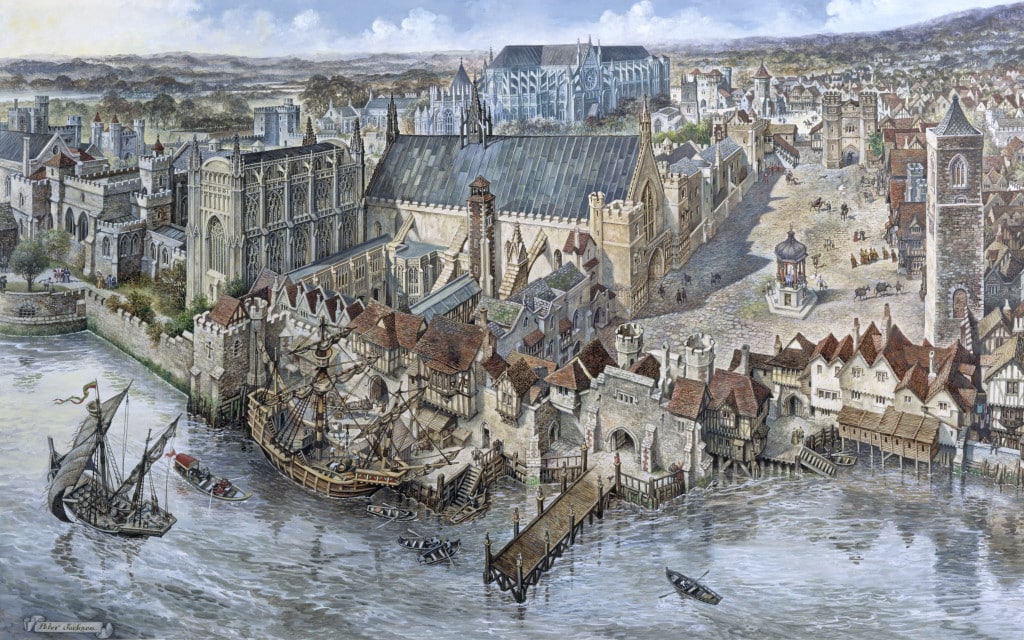
Credit: Look and Learn / Peter Jackson Collection
But why Thorney Island? It is no coincidence that Thorney island was chosen to found a monastic house. Settlement of the site and other parts of London outside the city, such as Fleet Street and the Strand, had emerged sometime after the Romans left England in 410 AD. Their occupation of England over four centuries had created the fortified City of London (Londinium), which covered an area that still harks back to its Roman roots today as ‘the Square Mile.’
However, in the centuries after the Romans left England, London began to spread outside the City’s walls. These areas eventually connected the City of London with Thorney Island. As the name suggests, the island was ideal for the foundation of a monastery as it was covered with thickets and other inhospitable herbaceous life. This kept it isolated from outside worldly temptations and thus was perfect for Godly living.
The origins of the Abbey itself are obscure. Nobody knows precisely when this mighty building was founded. It seems to have been a project associated with a Saxon archbishop, Archbishop Dunstan, around the 960s and done in concert with King Edgar. Incidentally, Edgar was the first monarch whose coronation was recorded in some detail, with his wife and queen, Queen Aelfthryth, being the first consort to be crowned Queen of England. These solemnities did not take place at Westminster but at Bath Abbey in 973 AD.
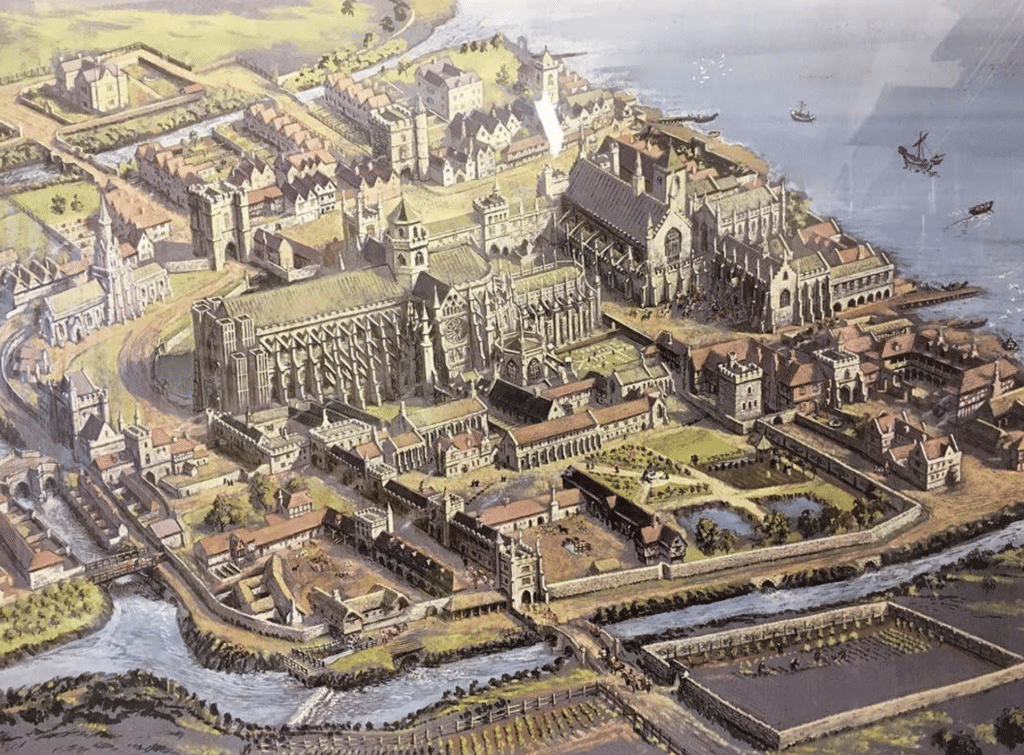
The creation of Edgar’s Saxon church emerged from a period of reforming and rebuilding the church after the Viking raids upon England that began in 793 AD. From the outset, the Abbey of St Peter was a royal abbey and a monastic foundation which housed 12 Benedictine monks. Around 100 years passed before the next behemoth of English history would stamp his name upon the story of Westminster Abbey. Enter Edward the Confessor…
1060AD: Edward the Confessor Rebuilds the Saxon Abbey
Edward’s rebuilding of Westminster Abbey was inspired by the Eastern Christian Church, where impressive imperial-style basilicas were being raised to God’s glory. Not wanting to be outdone by his royal neighbours in Europe, Edward swept away Edgar’s early church and founded a second iteration of the abbey in 1060 AD. Nobody knows for sure how this second church looked. However, it was more substantial and unified than the first, with a marching colonnade of arches down the nave and an apsidal east end, possibly containing an ambulatory.
Edward the Confessor also built the first ‘Palace of Westminster’, adjacent to the abbey and alongside the River Thames. This seeded Westminster as the centre of royal power in England. The importance of Westminster, however, would only really take root after Edward’s death at the palace in 1065 and his later canonisation in the twelfth century as the patron satin of kings.
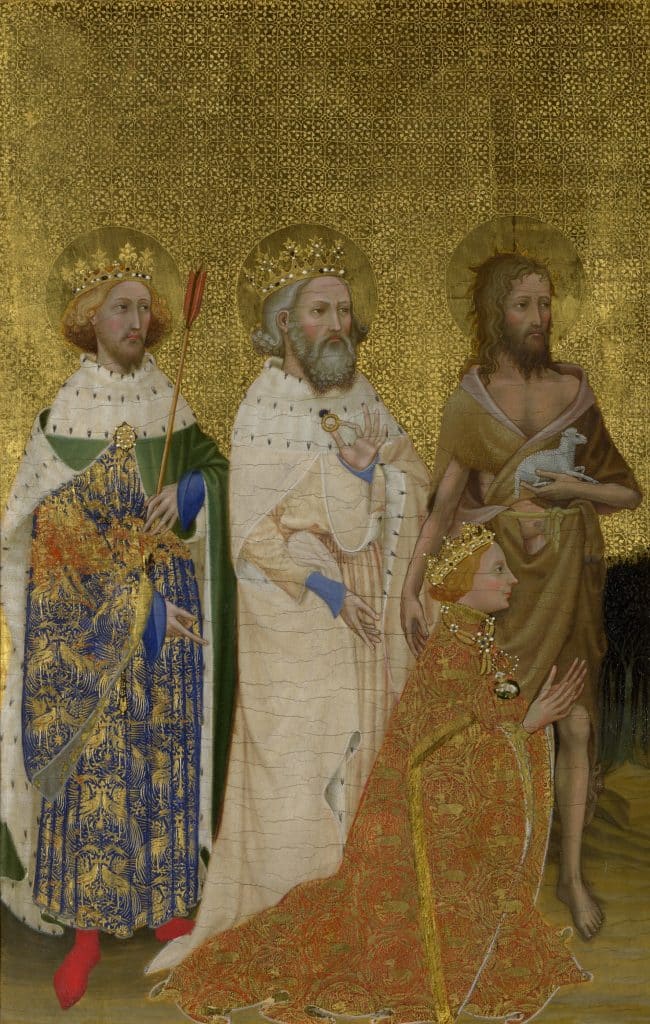
The Palace of Westminster would eventually become the primary London base of medieval kings, while Westminster Abbey became a centre of pilgrimage. Saint Edward the Confessor became a much-loved saint, venerated by monarchs and the common folk alike and, in the thirteen century, Henry III rebuilt a glorious shrine that took centre stage directly behind the high altar, just as it remains so to this day.
Sadly, none of Edward’s original Saxon abbey survives, but after the Norman invasion of England in 1066, William the Conqueror sealed the abbey’s place in English history by being crowned there on Christmas Day of the same year. Subsequently, virtually every English monarch has been anointed and crowned in the abbey, setting a precedent for centuries of English coronations.
1245AD: Westminster Abbey is Rebuilt – Again!
The medieval period saw significant remodelling of the abbey – again! In 1245, King Henry III began to rebuild Westminster Abbey, sweeping away virtually every trace of Edward’s monastic church.
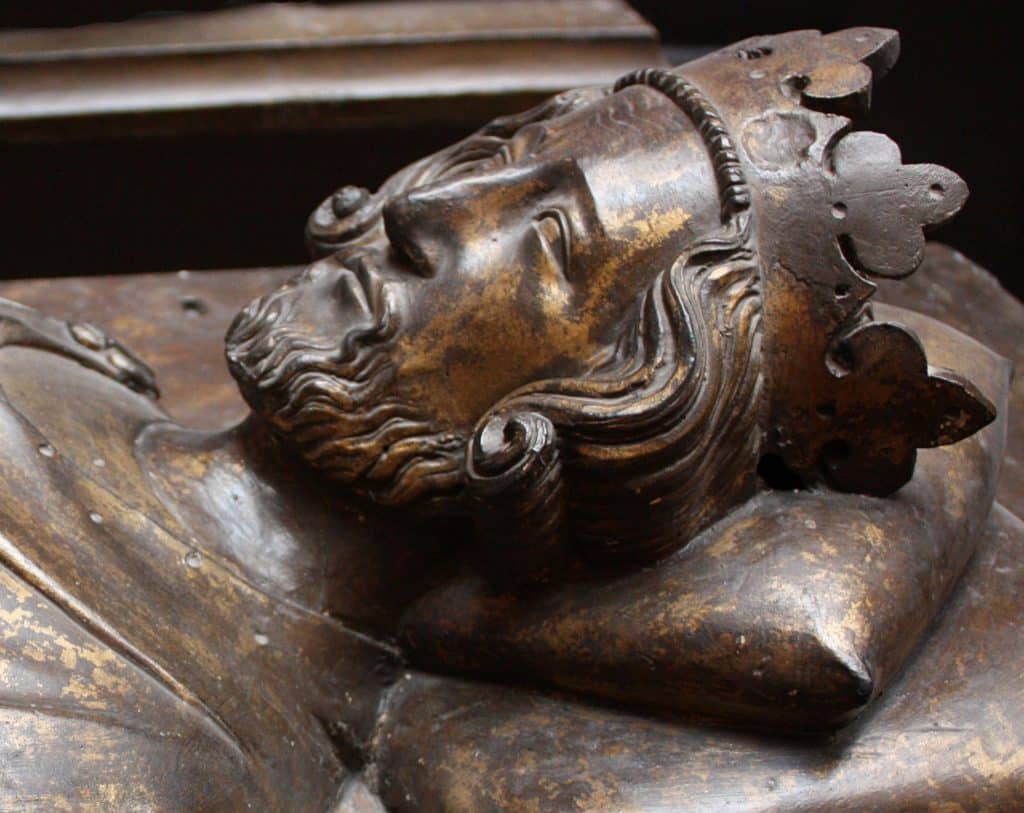
Henry had become king at just nine years old. It was a time of great political turmoil following the death of a deeply unpopular monarch, King John. However, after some years of successfully navigating these difficulties, Henry emerged as a man with a plan. Part of that plan was to consolidate the centre of royal power at Westminster, creating a place in which to live (Westminster Palace) alongside a place to workshop (at the rebuilt shrine of a much beloved English saint), a place in which to be crowned and a mausoleum in which to be buried.
Unfortunately, Henry III did not live to see the completion of his new church. While the east end, including his own tomb, the rebuilt shrine of the Confessor and the original Lady Chapel (which was rebuilt as a Tudor mausoleum by Henry VII in the sixteenth century) were complete, it would not be until around 100 years later that Richard II would finish the nave in the design intended by his Plantagenet forefather.
Westminster Abbey Today
Today, the abbey remains one of England’s most historic and important buildings. It is steeped in centuries of English history and has steadfastly witnessed profound social and religious change. Thousands of notable figures have passed through its doors, and many are buried within its grounds.
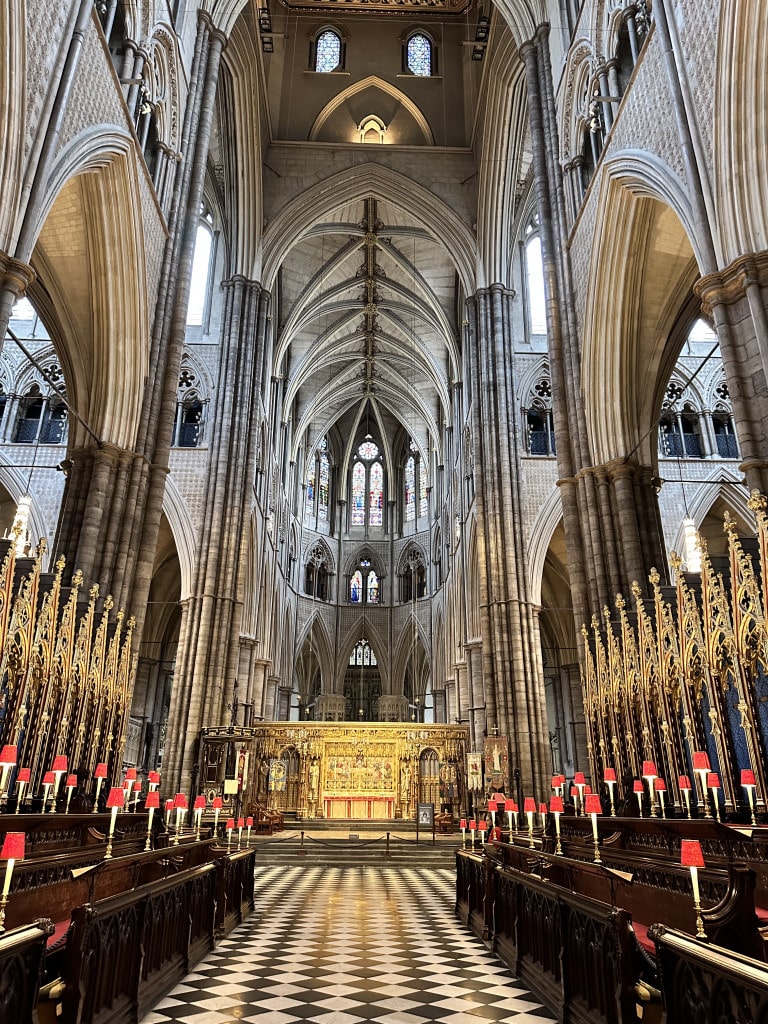
From a Tudor point of view, these include the founder of the Tudor dynasty, Henry VII and his wife, Elizabeth of York, who lie in eternal repose at the heart of the sumptuous Henry VII Chapel. Indeed, there is much to be seen by the Tudor enthusiast, not least the graves of Anne of Cleves, who lies interred to the right of the sacrarium close to the high altar. Then, of course, there are the fabulous marble tombs of Mary I, Mary, Queen of Scots and Anne’s own daughter, Elizabeth – and many more.
The abbey we shall see during the coronation of Charles III on 6 May, has undergone many rounds of restoration, particularly in the eighteenth and nineteenth centuries. However, except for the two west towers, it remains essentially unchanged from the last major rebuilding project of the thirteenth century.
While we shall see the coronation procession making its way down the nave, dominated by its glossy pillars of Purbeck marble from Dorset, the coronation itself will take place in front of the high altar, the most sacred place in the abbey. Apart from the coronation regalia, two other historic items of particular significance will be on display during the service. The first is the coronation chair.
The History of the Coronation Chair
The origins of this old piece of English furniture lie with the son of Henry III, King Edward I, who reigned between 1272 and 1307. He is written into history as the ‘Hammer of the Scots’. Although his determination to unify England, Scotland and Wales resulted in the complete subjugation of the latter, with Scotland, he was ultimately unsuccessful. However, he did obtain the legendary Stone of Scone, upon which Scottish kings had sat to be crowned. Edward brought the stone to the abbey and ordered the construction of a bronze chair to house it.
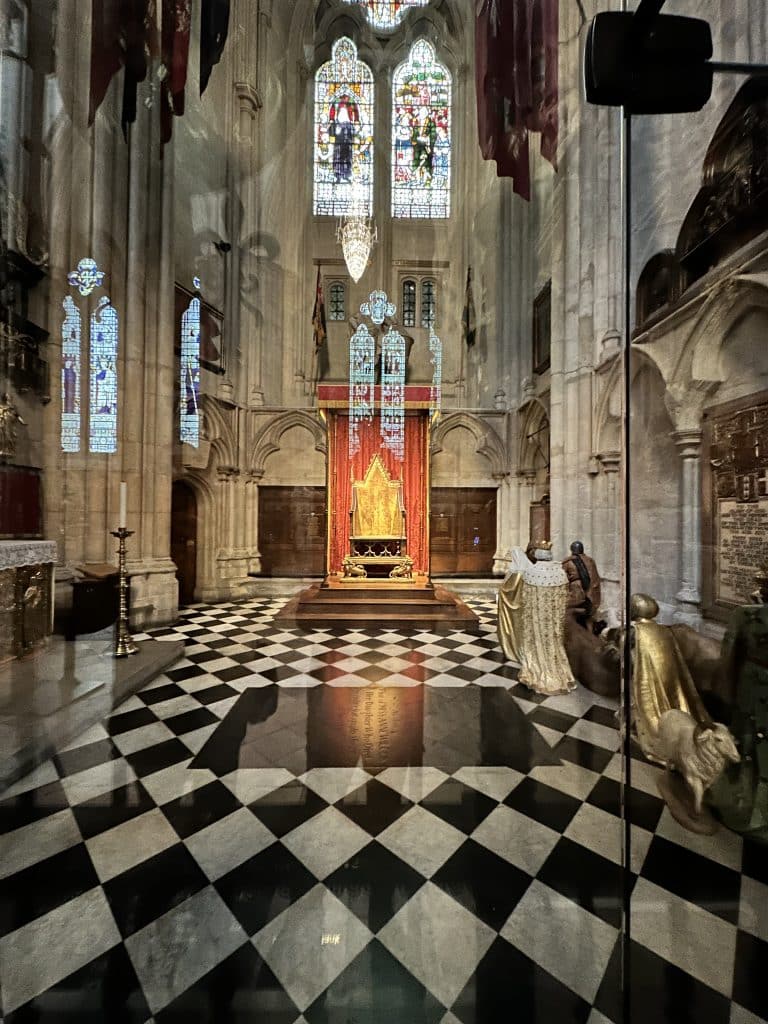
Initially, a wooden model of the chair was likely created by the king’s master mason, Michael of Canterbury. This was duly completed around 1296, making the coronation chair the oldest known piece of furniture made by a named craftsman in England. However, the wars in Flanders intervened, and the expense of the project to cast a final bronze version of the chair was shelved. Instead, the oak chair was gilded and set next to the shrine of the Confessor for many a year.
The earliest confirmed use of the chair for a coronation was in 1399 for Henry IV. Professor Roy Stong states: ‘ little is known about it for most of the fourteenth century, although its use during this period cannot be ruled out.’ Since then, every monarch crowned at the abbey has been seated in this chair, except for Queen Mary II, who was crowned alongside her husband, William, in 1689. As she ruled jointly with King William (who used the ancient coronation chair), a replica had to be made. This is now on display in the Jubilee Galleries.
The Stone of Scone, or The Stone of Destiny, as it is also known, was returned to Scotland in 1996, precisely 700 years after it was removed from the country on Edward I’s orders. It will only return to England for future coronations, including Charles III’s.
Finally, there is one more incredible artefact you should look out for during the coronation ceremony. This is known as the Cosmati pavement, where, the coronation chair will be placed directly in front of the high altar. It is named after the Italian family responsible for its creation.
The Comasti Pavement
The pavement was laid down in 1268 by order of Henry III, who, as we have seen, started re-building Edward the Confessor’s Abbey in the new Gothic style in 1245. This spectacular mosaic coronation pavement surpasses even anything found in Rome, the epicentre of the Catholic world when the pavement was created in the thirteenth century. Although the pavement has been recently restored, it survives virtually intact and is imbued with symbolism and hidden, cryptic messages. Read on to find out more…
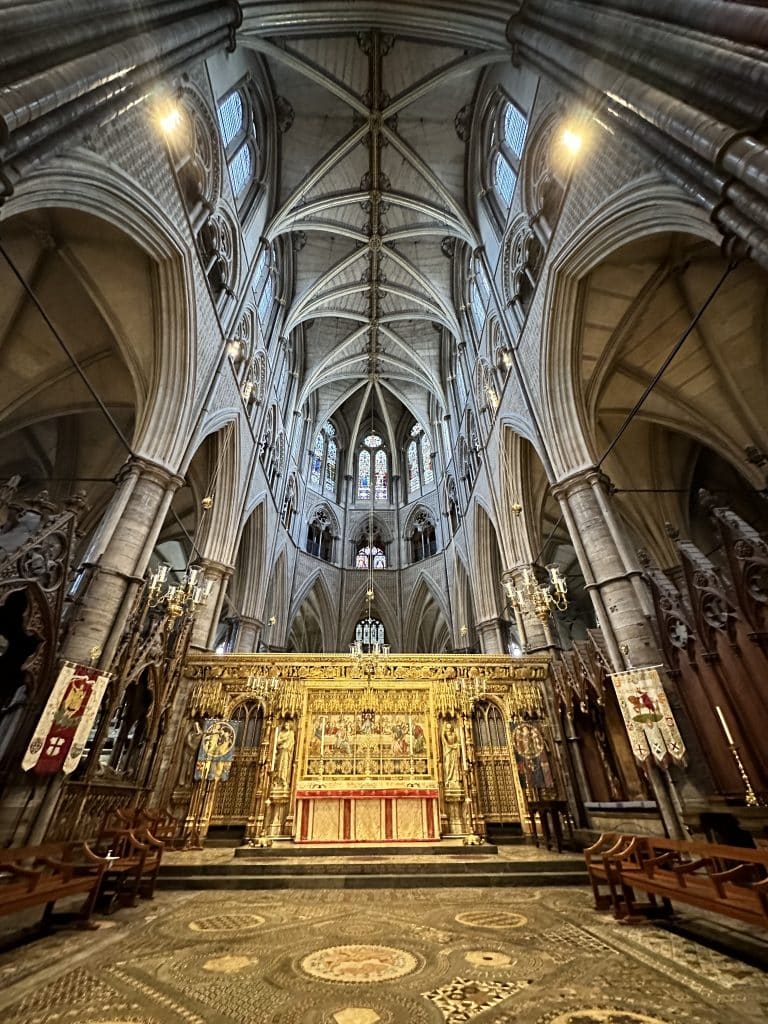
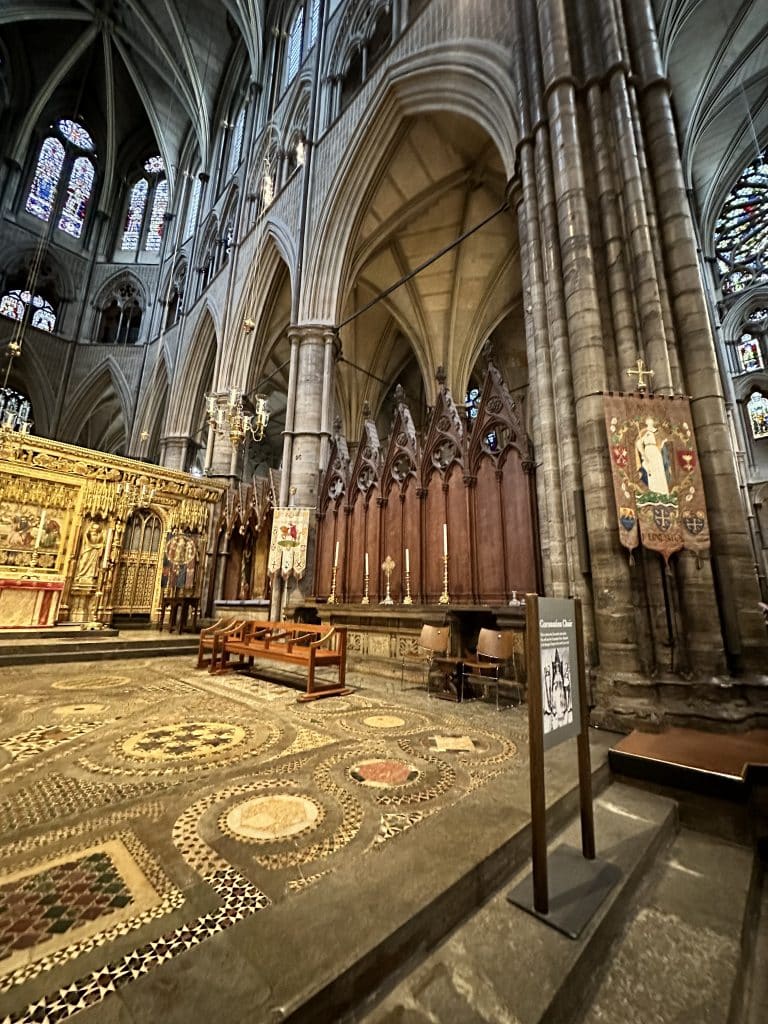
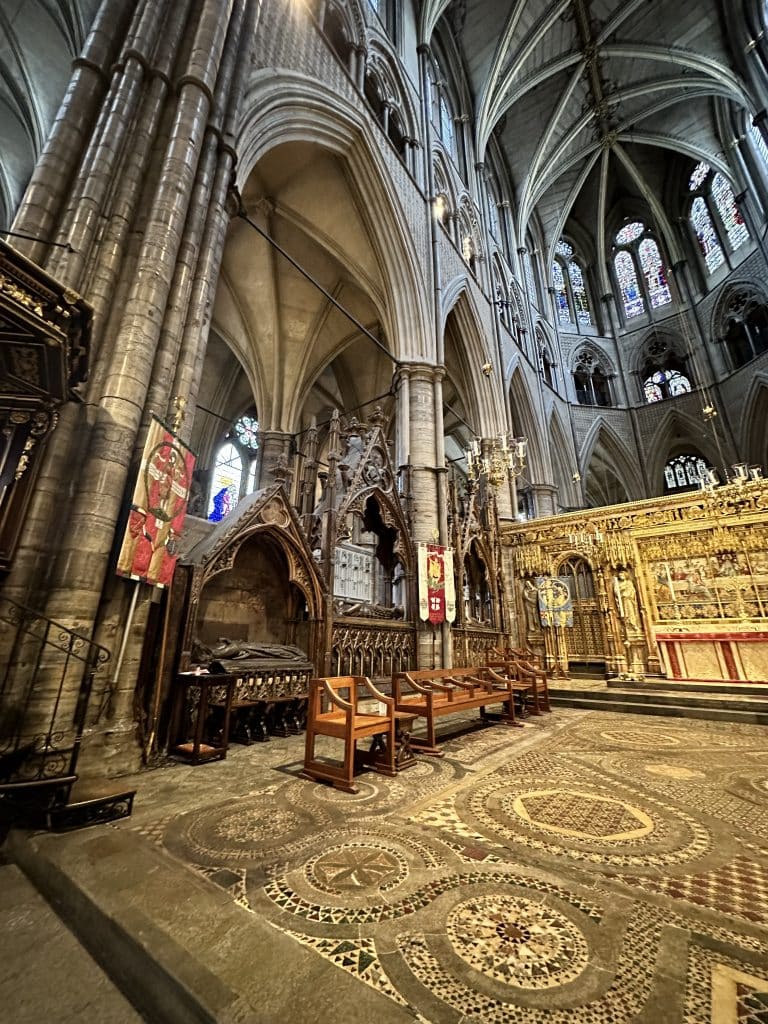
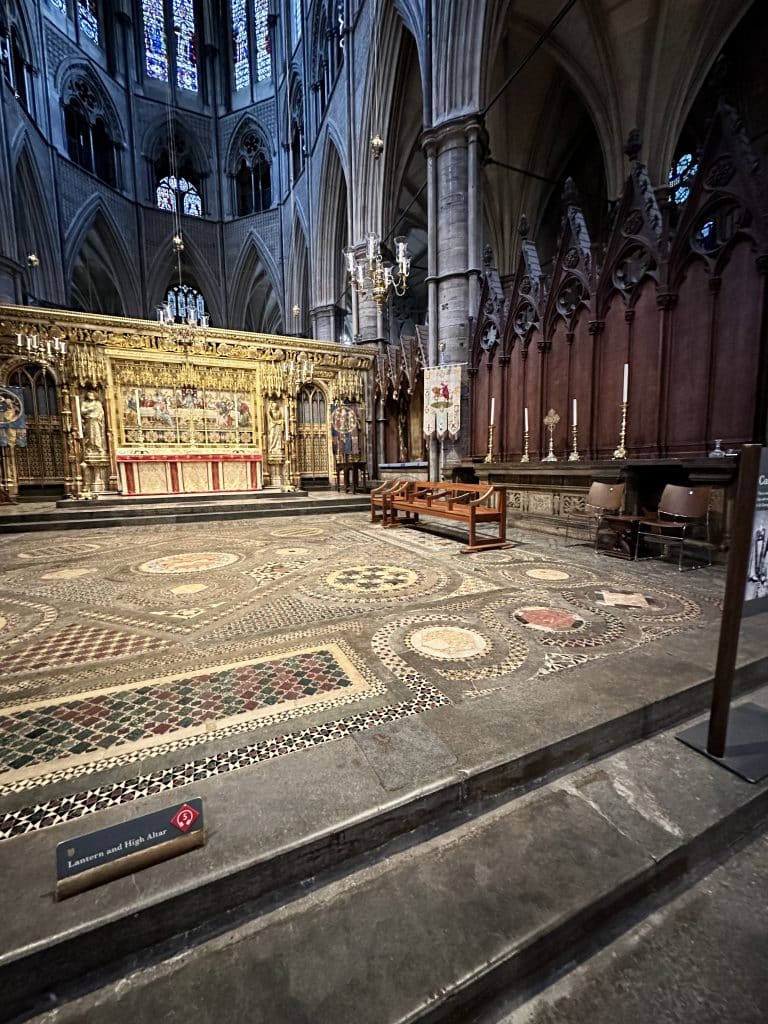
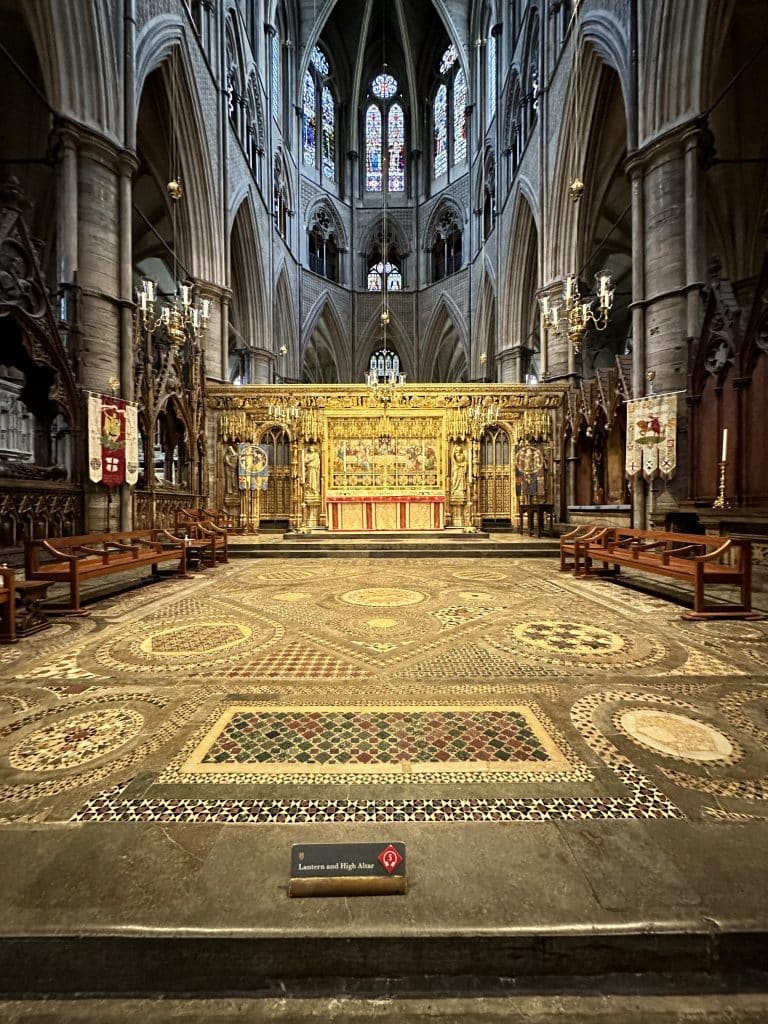
A slice of Egyptian Rose onyx from a Roman column sits at the pavement’s centre. The use of the stone from Rome harks back to the Imperial aspirations of medieval English kings, who derived so much of their ideas of kingship from the notion of imperial rule. The swirling pattern of the stone is meant to represent the clouds of chaos and the origin of all things, to which God brings order.
This drum of stone is encircled by bell metal. Around which there is a Latin inscription, a riddle that refers to the end of the world, calculating that it will last for 19,683 years.
It reads, ‘In the year of Christ one thousand two hundred and twelve plus sixty minus four, the third King Henry, the city, Odoricus and the abbot put these porphyry stones together. If the reader wisely considers all that is laid down, he will find here the end of the primum mobile; a hedge (lives for) three years, add dogs and horses and men, stags and ravens, eagles, enormous whales, the world: each one following triples the years of the one before. The spherical globe here shows the archetypal macrocosm.’
A medieval monk helpfully interpreted the inscription. This is described on Westminster Abbey’s website. ‘The primum mobile means this world, whose age or ending the writer estimates, as he imagines it, by increasing the numbers three-fold. So a hedge lives three years, a dog nine, a horse twenty-seven, a man eighty one and so on. The final date is calculated by a chronology based on the mythical life-spans of animals. And he explains that the macrocosm is “the great world in which we live”, the microcosm being man. The ‘spherical globe’, he says, is “the round stone, having in itself the colours of the four elements, fire, air, water and earth”.’
In addition to this feature, another intriguing element is inlaid into the pavement.
The architectural historian, Jonathan Foyle, spoke to me recently about the abbey’s history – and specifically noted that part of the pavement has another circular section with seven stars. He believes that these star stars were symbolic of the seven stars of the Holy Ghost and that it was here that the medieval Crown of St Edward was positioned before it was placed upon the altar during a coronation ceremony. However, if this was ever the case, the tradition has been lost over time. Nevertheless, perhaps you can look out for it during the coronation service?
As we have seen, the history of Westminster Abbey is inextricably entwined with that of the English monarchy, each ennobling the other over the centuries. At the heart of the coronation ceremony is the notion that the monarch transforms from a mere human into God’s anointed on Earth. Where better to experience this than the mighty Westminster Abbey? In this place, generations of kings and queens have worshipped, rejoiced and laid their weary bones, providing us with the perfect theatre of coronation!
Sources
Coronation: A History of Kingship and the British Monarchy, by Roy Strong. 2005. Harper Collins
If you have enjoyed touching the past through this blog, you can join my membership, The Ultimate Guide to Exploring Tudor England, which brings together all my best, most comprehensive content in one place: blogs, videos, live chat, progresses, maps, itineraries, travel information and podcasts.

